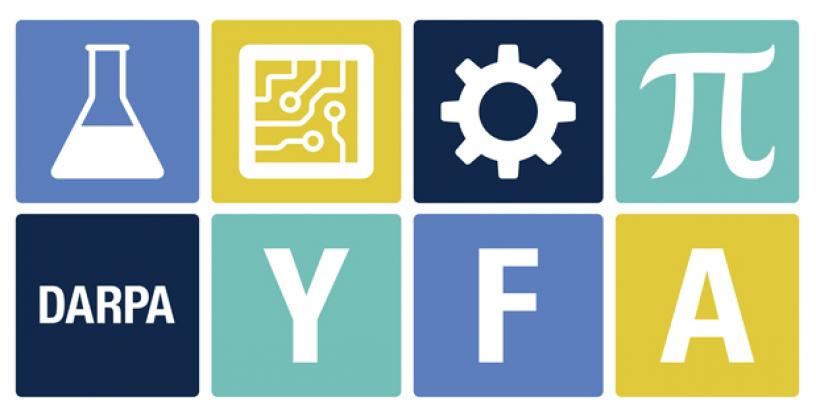
Solicitation seeks junior faculty grant proposals in more than two dozen broad-ranging scientific research areas
Sep 7, 2017
DARPA published its Young Faculty Award (YFA) 2018 Research Announcement today, seeking proposals in 26 different topic areas—the largest number of YFA research areas ever solicited.
The YFA program aims to identify and engage rising stars in junior faculty positions in academia as well as equivalent positions at non-profit research institutions and expose them to national security challenges and needs. The 2018 solicitation will provide high-impact funding to elite researchers early in their careers to develop innovative research directions that enable transformative Department of Defense (DoD) capabilities. The long-term goal of YFA is to develop the next generation of scientists and engineers who will focus a significant portion of their future careers on DoD and national security issues.
“We’re excited to announce a large number of wide-ranging research topics spanning all six of DARPA’s technology offices,” said Tyler McQuade, acting director of DARPA’s Defense Sciences Office. “Junior tenured and tenure-track assistant and associate professors from diverse disciplines have the opportunity to bring their expertise and innovative ideas to address science and technology challenges of interest to DARPA program managers. While these are fundamental research efforts, if successful, they may eventually yield breakthroughs that could give rise to revolutionary military and civilian technologies.”
The 26 YFA topic areas for 2018 are listed below. For detailed descriptions of teach topic see Para. I. E., “Topic Areas (TAs)” on P. 6 of the YFA Research Announcement (DARPA-RA-17-01) available here: https://go.usa.gov/xRFCZ
- Designing Ungameably Complex Games
- Topological Photonics
- Artificial Intelligence for Materials Discovery
- Transformative Radiation Sensing
- Engineered Interactions with the Energy of the Vacuum
- Novel Methods for Nonsurgical Brain Interfaces
- Self-forming Chronic Central Nervous System (CNS) Neural Interfaces
- The Minimal Plant: Engineering Plants for Easy Biosynthetic Pathway Design with High Modularity
- Antifouling Solutions for Large, Nonplanar Optical Surfaces
- Replicating Cell-Cell Information Transfer
- Programmable DNA Repair for Improved Genome Editing Outcomes
- Efficient Integrated Nanophotonics
- Adversarial Artificial Intelligence (AI)
- Developing Intelligent Sensors for Fentanyl and Related Toxins
- High Quality Atomic Traps and Waveguides
- Wideband Efficiency in Millimeter Wave Power Amplifiers
- Materials and Actuator Innovation for Small Scale Mobility and Manipulation
- Reducing Software Attack Surface through Compiler-Rewriter Cooperation
- Computational Models of the Spread of False or Misleading Information
- Big Data Summarization
- Decentralized Control of Networked Unmanned Autonomous Systems
- REsilience through COmposable Logistics (RECOiL)
- Wide Area Sensing Using the Internet of Things
- Tactical Terrain Analysis
- Thermostructural Sensitivity to Uncertainties
- Swarm Intent Understanding
The Research Announcement (RA) solicitation seeks grant proposals for research activity consisting of a 24-month base period. Each 12-month interval of the base period should not exceed $250,000. Proposals should also include a 12-month option period with a maximum funding level of $500,000. The 12-month option period, referred to as the “Director’s Fellowship,” will be reserved for a limited number of awardees who demonstrate exceptional YFA project performance over the 24-month base period. A target start date of July 2018 may be assumed for planning purposes.
Executive summaries are due Oct. 2, 2017, at 4 p.m. Eastern Time, and full proposals are due Dec. 4, 2017, at 4 p.m. Eastern Time. For all submission details, including eligibility, please refer to the RA here: https://go.usa.gov/xRFCZ.
# # #
Media with inquiries should contact DARPA Public Affairs at outreach@darpa.mil
Associated images posted on www.darpa.mil and video posted at www.youtube.com/darpatv may be reused according to the terms of the DARPA User Agreement, available here: http://go.usa.gov/cuTXR.
Tweet @darpa
